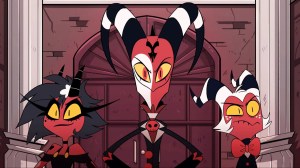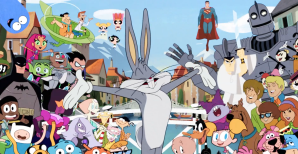Although the Digimon franchise was originally conceived to capitalize on the digital pet phenomenon, the series has since evolved far beyond that due to the many exhaustive and elaborate designs of the series’ central monsters.
Videos by ComicBook.com
To commemorate a special art book released in Japan, designers Kenji Watanabe, Kagemaru Himeno, Soh Moriyama, As’maria, and Haito Nakano recently held a roundtable interview (as translated by garm from Will the Will) breaking down many of the monster designs and how they were conceived.
When mentioning the design philosphy behind the monsters, each of the illustrations emphasized the freedom from restriction they had with each of the designs. Himeno mentioned how, unlike her work for the Pokemon series that “[she] found the spikiness and female Digimon‘s sex appeal in Digimon really interesting to draw.” Elaborating that it was “fun adding all the details” and that she’s “usually not given many specifications or restrictions, and I’m just told to draw however [she] like[s].”
Each of the illustrators emphasized how much detail they were allowed to put into each of the design illustrations, which is something fans of the series have been drawn to. These details come through especially well with Ultimate and Mega forms, which helped it stand out further from other monster collecting franchises like Pokemon.
This detail even goes into the heavy inks of the series, which Watanabe notes is distinctly Digimon and even has some hidden references to Western comic book styles, “I’ve been asked if I was trying to add an American comic-like touch to it, but that’s not quite right. More accurately, I used the American comic style as a base while still inking in my personal style.”
But, the most surprising, yet unsurprising detail for each of the designs is maintaining a “coolness” factor for each of them to appeal to boys. Himeno even jokes that “Digimon are really like what boys’ dreams are made of, aren’t they. They have all those spikes and teeth and look all fearsome, and sometimes a little sexy…’Pokémon’ designs are aimed more at younger boys and girls but also have this universal appeal. On the other hand, Digimon designs seem to be more focused on being targeted towards boys.”
With coolness factor in mind, each design was set out to be unique to highlight even the weakest Digimon. But it was important to maintain distinctive, reproducible silhouettes. This philosophy of creating cool, free designs while maintaining a central style is what helped cement the Digimon fandom to this day. If you want to read up more of this detailed interview, you can find more at the link here.
The Digimon series was originally conceived by Bandai, Toei Animation, and WiZ in 1997 as a way to capitalize on the virtual pet craze sparked by Tamagotchi. The franchise focus on its titular “Digital Monsters,” monsters that live in a parallel, digital world that came from mankind’s technology. The franchise had its first anime adaptation, Digimon Adventure, which focuses on a group of children known as the DigiDestined (or “Chosen Children” in Japan) that are transported to the world of Digimon and have to fight the various evil digital beasts that roam the land.
via Will the Will









